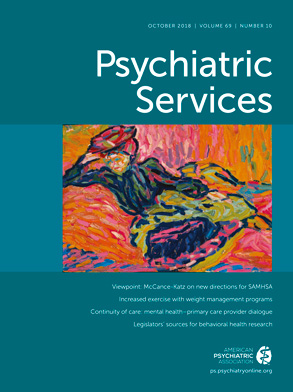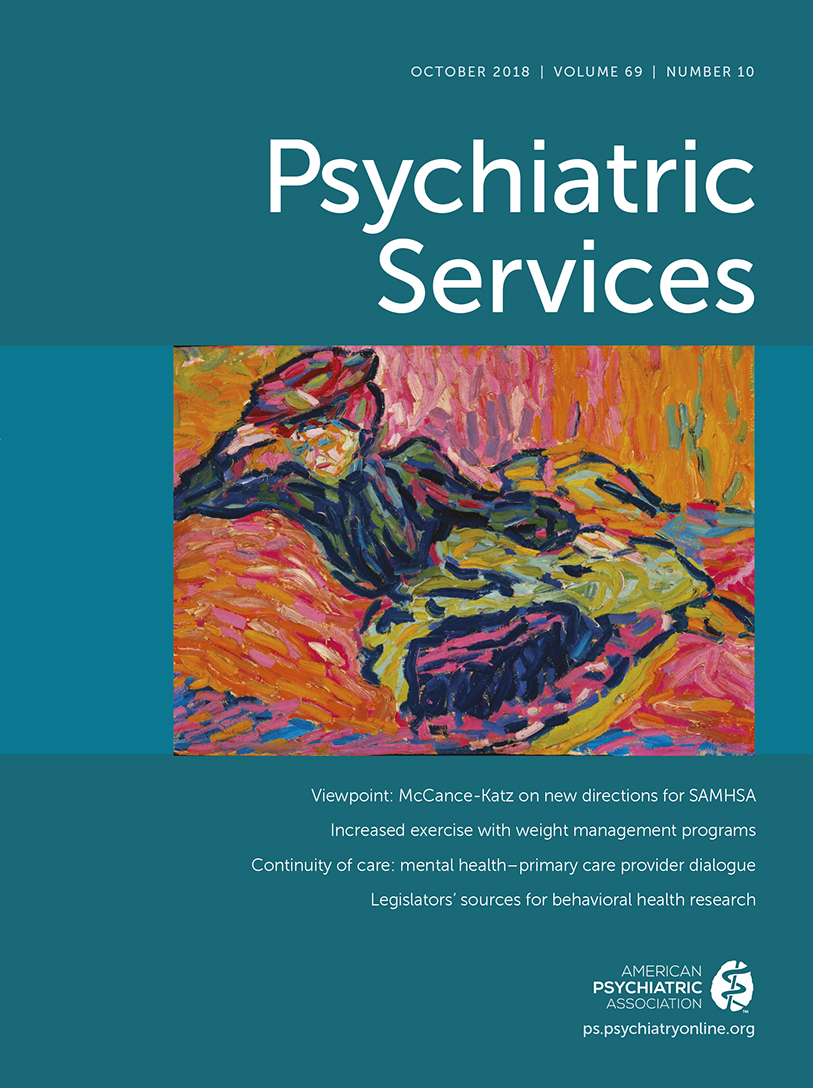Can a judge order a person on probation for a criminal offense not to use addictive substances? If the person uses them anyway, can the judge incarcerate her or him? And does it matter whether the person has a substance use disorder that may impair her or his ability to resist taking the drug? These questions were raised in a recent Massachusetts case, Commonwealth v. Eldred, that challenged practices common in the criminal justice system, including in more than 3,100 drug courts in the United States.
Struggling With Addiction
Julie Eldred, the defendant in this case, was a 29-year-old woman with a heroin addiction (
1). In July 2016, she was arraigned on felony charges of having stolen jewelry from the house of a person whose dog she was walking. Eldred confessed to the police that she had taken the jewelry to get money to buy heroin. A month later, after she admitted the facts of the case in court, the judge agreed to continue the proceedings without a finding on the condition that Eldred serve a year of probation. During that time, she would be required to remain abstinent from drugs, as confirmed by random drug screens, and to attend outpatient drug treatment three times a week. Eldred agreed.
Eleven days later, having started outpatient treatment, Eldred was found on a random drug screen to have tested positive for fentanyl, a potent synthetic opioid. She allegedly declined her probation officer’s request that she admit herself for inpatient treatment, and a hearing on her immediate detention was held the same day. At the hearing, the probation officer noted that it was the Friday before Labor Day weekend; that Eldred’s parents—who were her support system—were out of town; and that the officer did not feel comfortable releasing Eldred with fentanyl in her system. Eldred’s lawyer told the judge that no inpatient bed could be located for her, at which point the judge ordered her to be detained in a women’s prison until a bed became available. Eldred was in custody for 10 days, after which she was released to an inpatient drug treatment facility.
In November 2016, a hearing was held on the revocation of Eldred’s probation. At the hearing, Eldred argued that she had a substance use disorder that left her incapable of staying away from drugs. Thus, she claimed, her violation of the terms of probation was not willful and to punish her for it would violate her rights under multiple state and federal constitutional provisions. The hearing judge rejected her motion to remove the requirement that she remain drug free from the conditions of her probation and modified her probation to require her to remain in an inpatient drug treatment facility. Eldred’s appeal made its way to the Supreme Judicial Court, the highest court in Massachusetts.
Addiction and the Courts
Persons with substance use disorders, like Eldred, are disproportionately likely to appear in the criminal justice system. In some studies, as much as 80% of persons arrested test positive for at least one illegal substance (
2); in 2007–2009, more than half of state prisoners and almost two-thirds of sentenced jail inmates met
DSM criteria for substance dependence or abuse during the period before their arrest (
3). The relationship between substance use and crime is complex, but in at least some proportion of cases substances play a causal role, either by disinhibiting behavior or by motivating crimes with the goal of obtaining money for drugs. Drug dealers themselves are often addicted to the substances they distribute and use their profits to pay for their drug habit.
As concerns about use of illegal substances grew in the 1970s and 1980s, many states and the federal government adopted more draconian punishments for drug-related offenses. In the 20 years after 1980, arrests for drug offenses more than doubled (
4). It soon became clear that the growth in prison and jail populations was unsustainable and that correctional facilities were not the best place to help addicts shake their habit. In 1989, Miami established the first drug treatment court, an effort to divert substance-abusing defendants from the correctional system (
5). Although there is some variation in drug court models across jurisdictions, they generally offer deferred prosecution or punishment if defendants agree to a stipulated period of drug treatment, monitored closely by court personnel. Entry to most drug courts is limited to nonviolent offenders (
6). Abstinence is typically required, and random urine checks are common. If a defendant successfully completes the program, charges may be dropped or a sentence suspended. Failure to comply with the requirements of the court will usually result in incarceration.
As noted, the latest figures indicate that more than 3,100 drug courts now exist in jurisdictions across the country, their growth facilitated by federal funding to localities interested in establishing them (
7). How successful are drug courts? Although the use of coercive measures in treating substance use disorders is controversial, many leaders in the field believe that coercion can be essential to get some patients to enter, remain in, and complete treatment (
8). Multiple evaluations have confirmed that drug court participants have lower rates of general and drug-related criminal recidivism than defendants who are subject to usual criminal punishment (
6). The largest study to date examined 23 drug courts and six comparison sites and found that drug courts significantly reduce drug relapse and criminal recidivism and are associated with better psychosocial outcomes, gains that were sustained at 18-month follow-up (
9). Moreover, although drug courts spend more on services than comparison approaches, they evidence net cost savings through improved outcomes.
Even in jurisdictions without drug courts, or for offenders who do not qualify for them, drug court–type approaches have been adopted by courts and probation and parole systems. Thus, although Julie Eldred was not diverted to a drug court, the award of probation by the Massachusetts court with conditions requiring abstinence and treatment—as recommended in guidelines promulgated for the state’s trial courts—is clearly based on the drug court model. Hence, her challenge on constitutional grounds to the requirement that she remain drug free, if upheld, could have markedly reduced the sanctions available to encourage drug abstinence and successful treatment in the criminal justice system in Massachusetts and, if followed in other states, would have affected drug courts and related approaches more broadly.
Constitutionality of Requirements for Abstinence
On appeal of the conditions of her probation, Eldred argued that she “suffers from severe substance use disorder, a chronic brain disease marked by the compulsive use of a substance despite negative consequences.” As a consequence, her “use of fentanyl was a symptom of active opioid use disorder, which left her powerless to exert control over the compulsion to use opioids, despite negative consequences.” The legal basis for her claim derived from
Robinson v. U.S., a 1962 case in which the U.S. Supreme Court struck down a California statute that made it a crime to be “addicted to the use of narcotics” (
10). The Court held that the California law punished the status of being an addict rather than a proscribed act and hence violated the Eighth Amendment’s ban on cruel and unusual punishment. Like Robinson, Eldred maintained, she was being punished for her addiction per se, which left her unable to control her drug-using behavior. Her claims were supported by an affidavit from an expert in drug abuse treatment and by an amicus curiae brief filed by several medical organizations, including the American Academy for Addiction Psychiatry, which maintained that relapse is “a cardinal identifying characteristic of the disorder” (
11).
In its opinion, the state’s supreme court noted that before her acceptance of the terms of probation, which included drug abstinence, Eldred had not objected that she would be unable to adhere to the requirement (
1). Moreover, she had not offered proof at her hearing in the lower court of an absolute inability to control her drug-using behavior. Thus, the criminal court judge had the power to require abstinence as a condition of probation. Nor was Eldred’s incarceration, the court ruled, a punitive sanction that might evoke Eighth Amendment concerns. In general, revocation of probation is not a punishment for violating a condition of probation, but a new sentence for the underlying crime. For Eldred in particular, “the judge was faced with either releasing the defendant and risking that she would suffer an overdose and die, or holding her in custody until a placement at an inpatient treatment facility became available.” Concern about Eldred’s well-being and the safety of the community were legitimate bases for the judge’s action. Hence, the ruling in
Robinson was irrelevant to this case because Massachusetts was not seeking to punish Eldred for her substance use disorder (
1).
Implications of Eldred
The decision in Eldred affirmed the dominant approach to offenders with substance use disorders in the criminal justice system, including requirements for abstinence and treatment. Had the court done otherwise, the legitimacy of an important part of the drug court model would have been called into question, perhaps with reverberations in other states around the United States. However, Eldred left open the possibility that defendants could object to requirements for abstinence by demonstrating an inability to control their drug-using behavior on a case-by-case basis. How successful such claims would be in the courts remains to be seen. Indeed, defendants may be deterred from arguing that they lack control over their drug use lest the judge decide to confine them rather than risk community-based treatment.
Eldred’s argument, though, raised two related issues that have long been debated by scholars of substance use and that continue unresolved: To what extent can persons addicted to substances control their behavior, and are approaches that impose sanctions for relapse helpful or harmful to the treatment effort? DSM-5 notes that impaired control over substance use is one of the characteristics of a substance use disorder, with many affected persons experiencing intense cravings that may persist even after a substantial period of abstinence, often triggered by environmental cues. Craving may be the result of brain circuit changes that accompany addiction. However, DSM-5 does not claim that persons with substance use disorders lack all control over their substance-related behavior; indeed, many nonpharmacologically motivated approaches to treatment (e.g., 12-step programs) presume that with sufficient motivation, a person can refrain from substance use.
Providing motivation to avoid drug use is where imposition of sanctions comes in. Confrontation by family members, including spousal threats of separation or parental indications that they intend to expel a substance-abusing person from the home, can be pivotal to a person’s decision to seek treatment (
8). Behavioral contracting during treatment, such as the imposition of fines for lapses in abstinence, can incentivize continued compliance. Knowledge that a job is at risk has been shown to increase the rate of abstinence (
12), and professional licensure boards frequently use the threat of revocation to ensure that doctors, lawyers, and other professionals with substance use problems stay sober. Moreover, as noted earlier, drug courts have been shown to be significantly more effective in reducing drug relapse and criminal recidivism than usual criminal justice approaches (
9).
For the moment, the rejection of Eldred’s argument means that courts can continue to use the threat of revocation of community status and incarceration to motivate abstinence and participation in treatment. Absent compelling evidence of a complete loss of control associated with substance abuse, that situation is unlikely to change. So long as drug courts and related models remain effective, the courts seem likely to endorse them.

